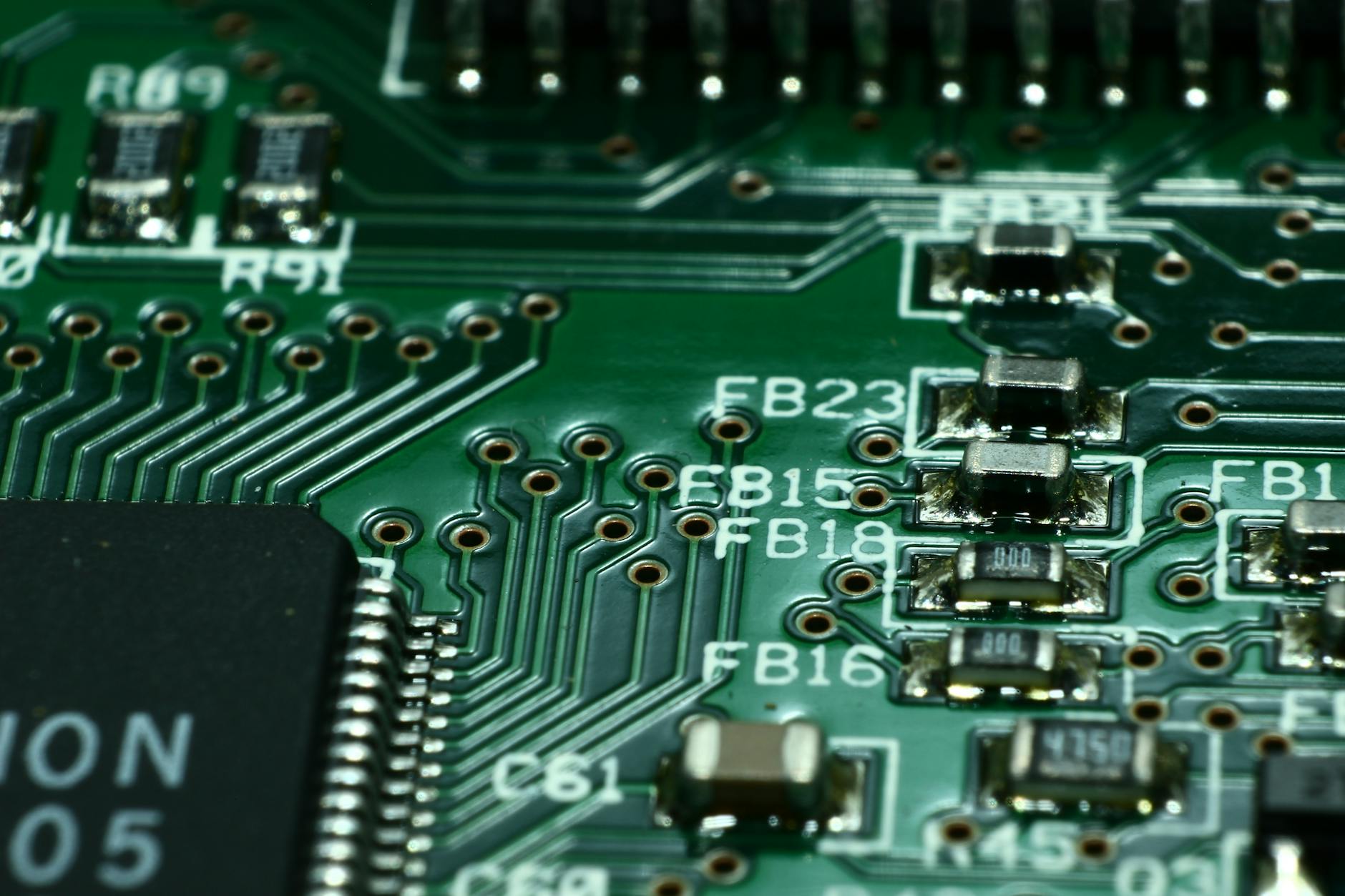The bottleneck calculator serves as a crucial tool for optimizing your system’s performance. Have you ever wondered how to pinpoint the exact limitations slowing down your computer’s speed? With the bottleneck calculator, this process becomes simpler than ever. By entering your hardware specifications, this tool uncovers any bottlenecking issues holding back your system’s full potential.
Identifying these bottlenecks is the first step toward enhancing your computer’s efficiency and overall user experience. By understanding where your system’s performance is hindered, you can make informed decisions to upgrade or reconfigure components for smoother operations. Stay tuned to learn how to interpret the results and take actionable steps to eliminate bottlenecks for a more seamless computing experience.
Understanding a Bottleneck Calculator
A bottleneck calculator is a tool used in assessing the performance capability of a computer system by identifying potential bottlenecks that may hinder its overall efficiency. Let’s delve into the definition and importance of this valuable resource.
Definition and Purpose
A bottleneck calculator analyzes the components of a PC, such as the CPU and GPU, to determine if any one part is significantly impacting the system’s overall performance. It helps users identify areas where upgrades or optimizations may be necessary, ensuring the smooth operation of the entire system. By pinpointing bottlenecks, users can make informed decisions to enhance their computer’s speed and functionality.
Importance in PC Hardware Evaluation
The bottleneck calculator plays a pivotal role in evaluating PC hardware setups. By calculating possible bottlenecks, users can understand which components might be limiting the system’s performance. This information is crucial for gamers, graphic designers, and anyone requiring a high-performing computer. By addressing bottlenecks, users can optimize their PC’s capabilities and improve its efficiency.
 Photo by Karolina Grabowska
Photo by Karolina Grabowska
Calculating Bottlenecks
Understanding how to calculate bottlenecks is crucial for optimizing processes efficiently. By identifying and addressing bottlenecks, you can enhance productivity and streamline operations. Let’s delve into the key aspects of calculating bottlenecks:
How to Calculate Bottlenecks
To calculate bottlenecks, you need to assess the capacity of each process step in a workflow. Determine the process capacity of individual steps and identify the step with the lowest capacity – this step is your bottleneck. Consider factors like production rates, processing times, and resource constraints to pinpoint the bottleneck accurately.
 Photo by RDNE Stock project
Photo by RDNE Stock project
Understanding Bottleneck Time
Bottleneck time refers to the duration taken by the bottleneck step to complete its portion of the process. It directly impacts the overall cycle time and throughput of the system. By analyzing bottleneck time, you can identify opportunities to reduce delays and optimize workflow efficiency.
Determining Bottleneck Accuracy
Ensuring the accuracy of bottleneck calculations is vital for effective decision-making. Validate your bottleneck analysis by monitoring actual performance against predicted outcomes. Adjust calculations based on real-time data and feedback to enhance the accuracy of your bottleneck identification.
For further insights on bottleneck analysis and examples, you can refer to informative resources like What is Bottleneck analysis? Understand with example, Operations Management Basics: Finding the bottleneck in processes, and How do you calculate CPU bottlenecking?.
Remember, optimizing bottleneck calculations is a continuous process that involves monitoring, analysis, and refinement to improve operational efficiency.
CPU and GPU Bottleneck Calculations
Understanding the interplay between your CPU and GPU is essential when optimizing your system’s performance. Calculating the bottleneck between your CPU and GPU can help you identify areas for improvement and enhance your overall gaming or computing experience.
Calculating Bottleneck CPU vs. GPU
When assessing the bottleneck between your CPU and GPU, it’s crucial to look at their respective capabilities and how they complement each other. A bottleneck occurs when one component is significantly outperforming the other, causing a slowdown in overall performance. To calculate this bottleneck, you need to compare the processing power of your CPU and GPU and identify any disparities.
Factors to consider when calculating the bottleneck include the clock speed, core count, and architecture of both the CPU and GPU. By analyzing these factors, you can determine which component is limiting the performance of your system and make informed decisions on upgrades or optimizations.
Factors Influencing Bottleneck Rate
Several factors can influence the bottleneck rate between your CPU and GPU. One significant factor is the type of applications or games you are running. Some applications may be more CPU-intensive, while others may heavily rely on GPU performance. Understanding the workload distribution of your system can help you pinpoint potential bottlenecks.
Another factor to consider is the age and compatibility of your components. Older CPUs or GPUs may struggle to keep up with the demands of modern applications, leading to bottlenecks. Ensuring that your components are well-matched and up to date can help minimize bottlenecks and maximize performance.
By analyzing and addressing these factors, you can effectively calculate the bottleneck between your CPU and GPU, optimize your system’s performance, and enjoy a smoother computing or gaming experience.
Photo by Pixabay

Process Optimization and Bottleneck Analysis
In the world of process optimization, understanding and identifying bottlenecks is crucial to enhancing efficiency. Bottlenecks are points in a process that limit the overall capacity to produce output. By pinpointing and resolving bottlenecks, a smooth and streamlined workflow can be achieved.
Calculating Bottleneck of a Process
To calculate the bottleneck of a process, it’s essential to identify the step that has the lowest capacity in the workflow. This step determines the maximum output that the entire process can handle. By calculating the time or capacity of each step and comparing them, you can easily pinpoint where the bottleneck lies.
Determining Bottleneck Capacity
Determining the bottleneck capacity involves analyzing the step in the process that has the lowest capacity or efficiency. This step governs the overall flow of the process and sets the pace for the entire workflow. Understanding the bottleneck capacity allows for strategic adjustments to improve overall productivity and output.
Optimizing processes and conducting bottleneck analysis are fundamental aspects of enhancing operational efficiency and maximizing output. By focusing on identifying and addressing bottlenecks, organizations can unlock hidden potential and improve their overall performance.
Photo by Dibakar Roy
Accuracy of Bottleneck Calculators
Bottleneck calculators play a crucial role in determining the performance limitations of a PC build. Let’s delve into how accurate these calculators are and assess their reliability.
Evaluating the Accuracy of PC Build Bottleneck Calculators
When evaluating the accuracy of bottleneck calculators for PC builds, it’s essential to consider various factors. These calculators typically analyze the compatibility and performance balance between the CPU and GPU. However, it’s important to remember that they are based on estimations and may not always reflect real-world scenarios.
To gauge the accuracy of a bottleneck calculator, users should input reliable data regarding their PC components. Factors such as the CPU model, GPU model, RAM capacity, and storage drive speed can significantly impact the calculations. Additionally, understanding the purpose of the build, whether for gaming, content creation, or general use, is crucial in assessing the accuracy of the bottleneck calculations.
Utilizing reputable benchmarking tools and performance testing software can provide a more comprehensive evaluation of a PC build’s bottleneck. By comparing the bottleneck calculator results with actual performance metrics, users can determine the reliability and accuracy of the calculations.
Reliability of ‘Will It Bottleneck’ Calculators
‘Will It Bottleneck’ calculators have gained popularity among PC enthusiasts seeking quick assessments of their system’s performance limitations. These calculators analyze the potential bottleneck between the CPU and GPU and provide users with a straightforward answer regarding system balance.
While ‘Will It Bottleneck’ calculators offer a convenient way to estimate performance limitations, their reliability may vary. Factors such as the algorithm used, the frequency of updates, and the inclusion of the latest hardware models can influence the accuracy of these calculators.
Users should approach ‘Will It Bottleneck’ calculators as a preliminary assessment rather than a definitive answer. Consulting multiple calculators and cross-referencing the results can provide a more reliable estimation of a PC build’s performance balance.
By understanding the methodologies behind bottleneck calculators and acknowledging their limitations, users can make informed decisions when optimizing their PC builds for peak performance.
 Photo by Azamat Esenaliev
Photo by Azamat Esenaliev
Advanced Bottleneck Calculations
When it comes to advanced bottleneck calculations in processes, there are several key aspects to consider. From calculating bottleneck time using tools like Excel OM to determining bottleneck utilization and analyzing CPU and GPU bottlenecks, a thorough understanding is crucial for optimization.
Calculating Bottleneck Time with Excel OM
One effective way to calculate bottleneck time is through the use of Excel OM. By inputting data on process times, workloads, and capacities, Excel OM can help identify the bottleneck time in a process. This allows for targeted improvements in efficiency and output.
Determining Bottleneck Utilization in Processes
Understanding how efficiently resources are utilized in a process is essential for bottleneck analysis. By determining bottleneck utilization, stakeholders can pinpoint areas where improvements can be made to optimize workflow and enhance overall productivity.
Handling Multiple Steps in Parallel in Bottleneck Analysis
In scenarios where multiple steps occur in parallel, it’s crucial to assess how these processes interact and affect each other. By conducting a comprehensive bottleneck analysis that accounts for parallel steps, organizations can streamline operations and reduce delays.
Analyzing CPU and GPU Bottlenecks
In today’s digital landscape, CPU and GPU bottlenecks can significantly impact system performance. By analyzing these bottlenecks and identifying areas of strain, users can make informed decisions regarding hardware upgrades or optimizations to enhance overall computing efficiency.
Remember, accurate bottleneck calculations pave the way for improved process efficiency and performance optimization. By leveraging tools like Excel OM and considering factors like resource utilization and hardware bottlenecks, organizations can drive continuous improvement in their operations.






Leave a Reply